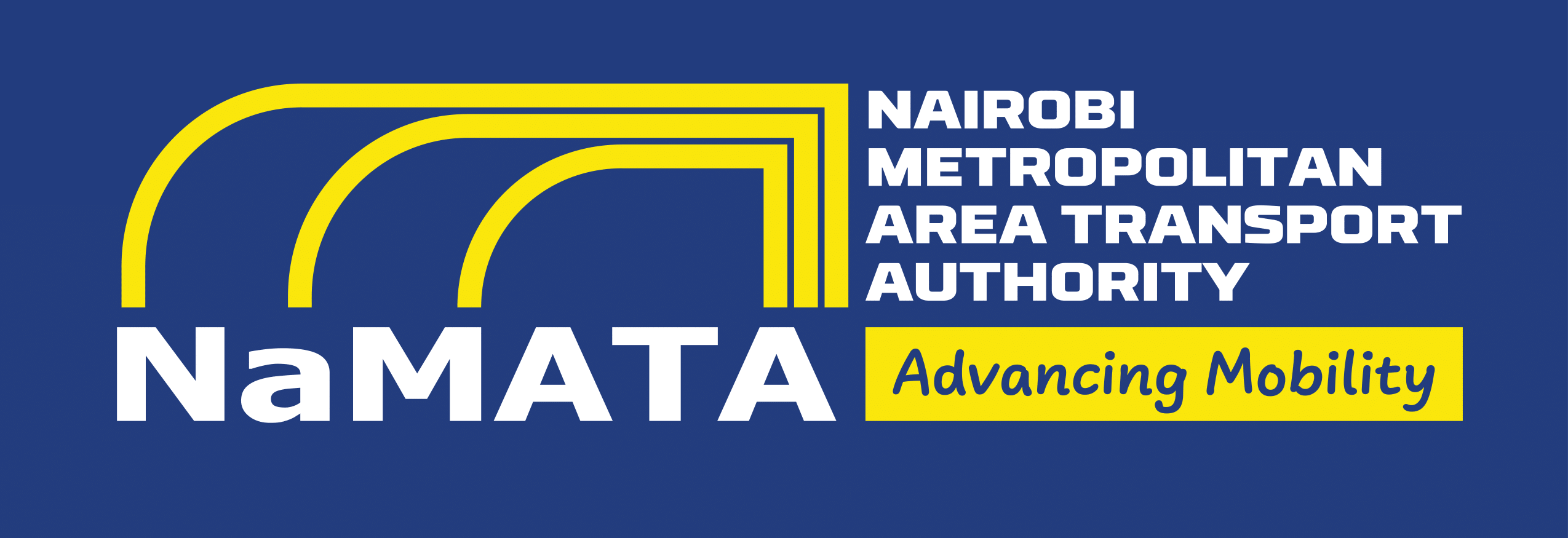The Integrated National Transport Policy, approved in 2012, recommended developing a Mass Rapid Transit System (MRTS) for Nairobi, encompassing Bus Rapid Transit (BRT) and Light Rail, and the establishment of the Nairobi Metropolitan Area Transport Authority (NaMATA). NaMATA was established in 2017 to coordinate public transport in the Nairobi Metropolitan Area, develop and implement urban transport policies, and regulate commuter services.
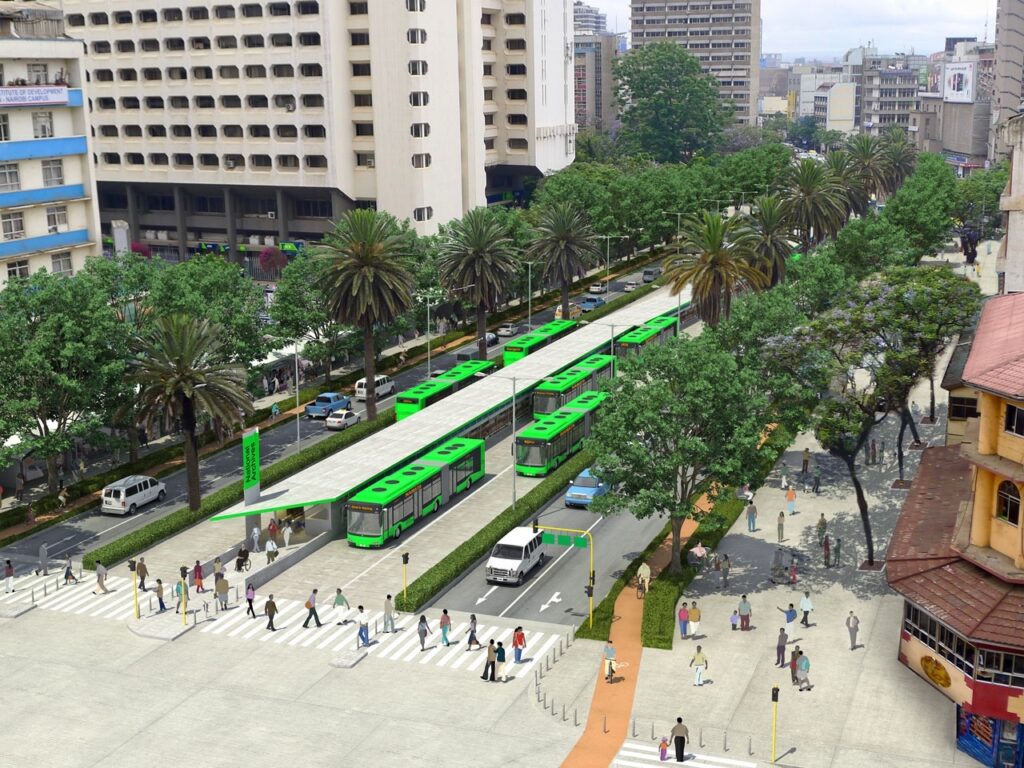
Projects & Programmes
NaMATA is undertaking key projects and programmes to transform mobility within the Nairobi Metropolitan Area. Our focus is on delivering an integrated, efficient, and sustainable transport system through the implementation of the Mass Rapid Transit System (MRTS). The MRTS encompasses several critical components, including Bus Rapid Transit (BRT) corridors, the development of a robust Commuter Rail network, and the provision of dedicated Non-Motorised Transport (NMT) infrastructure. Information on the progress and plans for each of these elements is provided below. In addition, we are actively involved in supporting initiatives that complement the MRTS and address broader transport challenges.
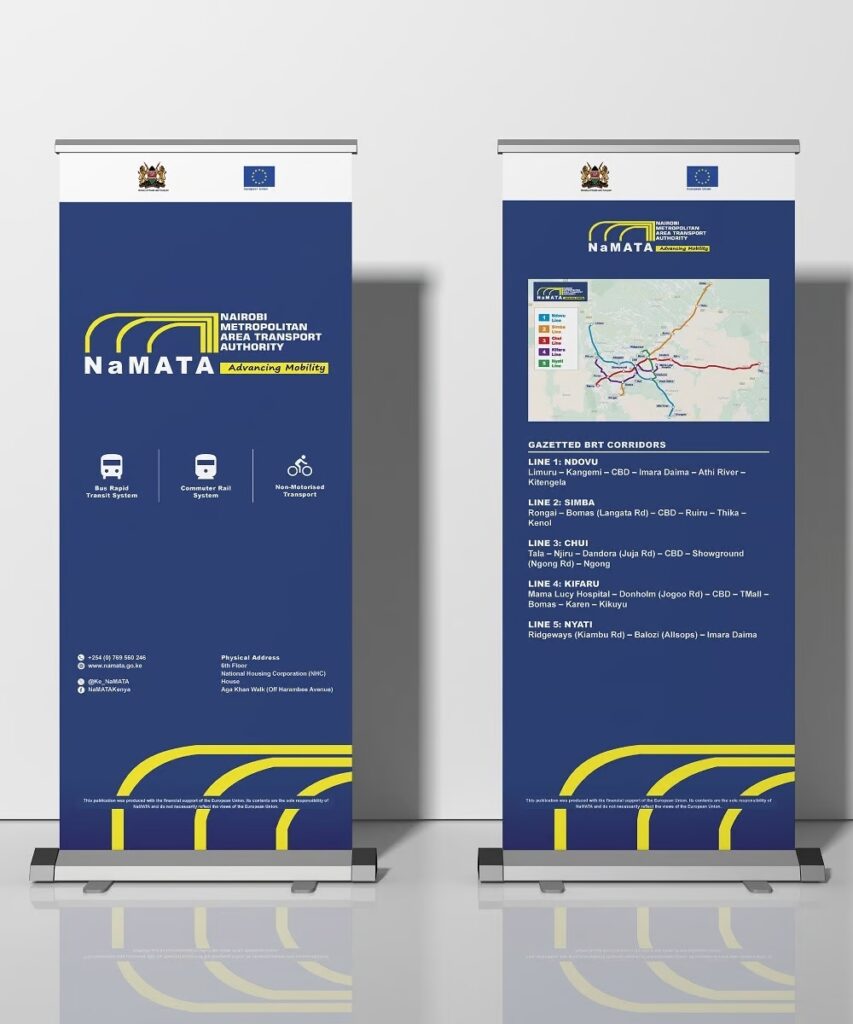

MASS RAPID TRANSIT SYSTEM (MRTS)
MRTS is a government-led, multi-faceted solution that will revolutionize mobility in the Nairobi Metropolitan Area. By integrating various modes of transport, the MRTS will significantly reduce congestion, improve travel times, and enhance the quality of life for everyone.
Nairobi's current public transport system, heavily reliant on informal paratransit vehicles, is struggling to keep up with the demands of a rapidly growing population. This has resulted in an over-reliance on private cars, leading to worsening traffic congestion and its associated challenges. The MRTS is a direct response to these challenges, envisioning a public transport system where Commuter Rail and Bus Rapid Transit (BRT) serve as the backbone. Additionally, the development of world-class Non-Motorised Transport (NMT) infrastructure and the implementation of Intelligent Transport Systems (ITS) are integral components of this transformation.
KEY MRTS PROJECTS:
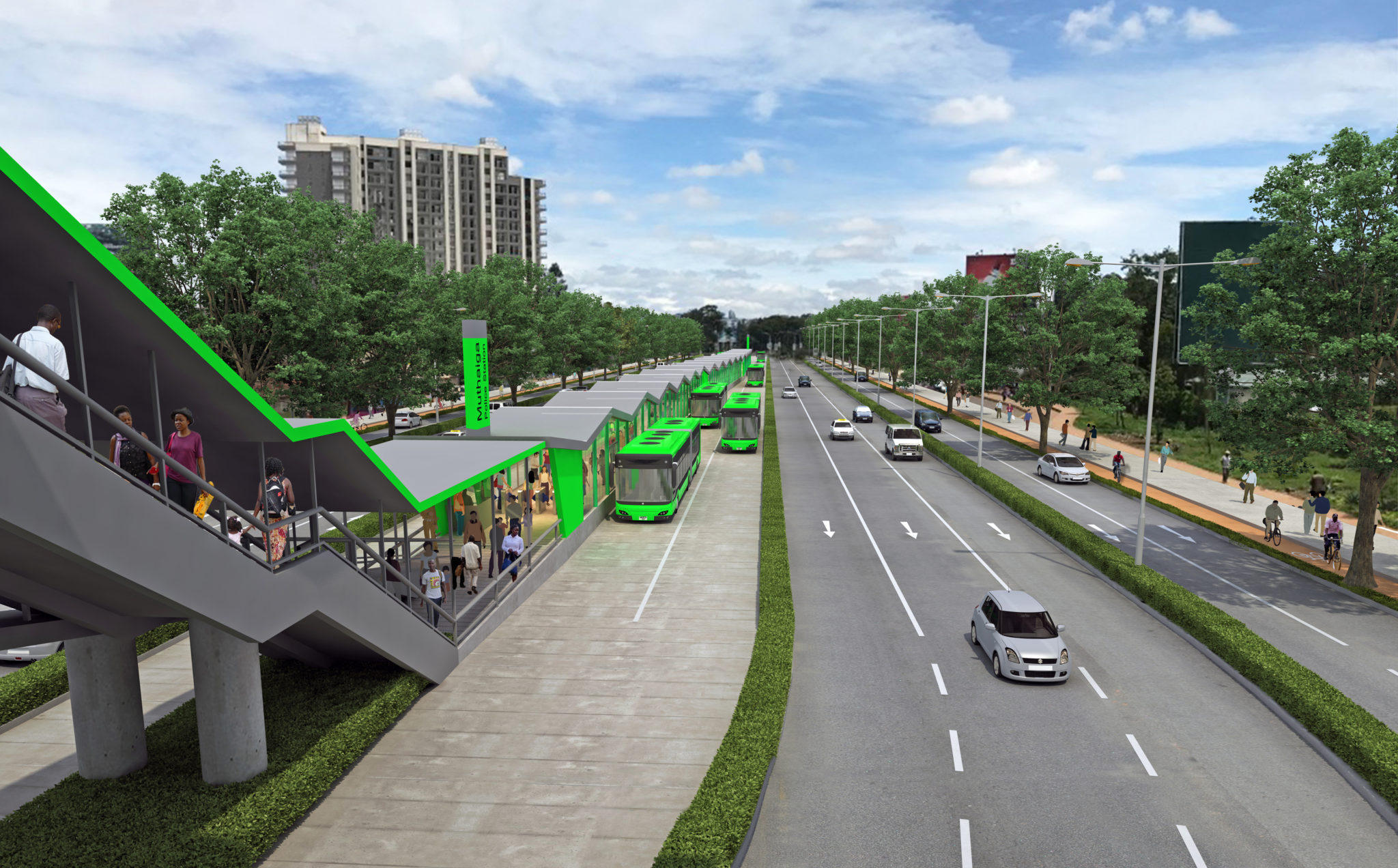
Bus Rapid Transit (BRT)
A high-capacity bus system designed to provide fast, reliable, and cost-effective public transport in Nairobi. Five BRT corridors have been gazetted, with Line 2 (Simba) on Thika Superhighway currently under infrastructure upgrades and Line 3 (Chui) in advanced planning stages with detailed designs for Phase I complete. Other lines are in various stages of development, with plans for Line 1 alongside the Nairobi 6 Expressway and Line 4 supported by the African Development Bank. Once fully implemented, the BRT network will significantly improve mobility and reduce congestion in the Nairobi Metropolitan Area.


Commuter Rail
NaMATA is dedicated to establishing a robust commuter rail system as a key component of NMA’s Mass Rapid Transit System. By attracting investment, implementing the Nairobi Commuter Rail Master Plan,developing national standards, and ensuring seamless integration with BRT, We aim to provide efficient, sustainable, and reliable rail transport for the Nairobi Metropolitan Area, alleviating congestion and improving connectivity.
Non-Motorised Transport (NMT)
Dedicated lanes and infrastructure for NMT, including walking and cycling, is a crucial part of Nairobi's transportation landscape,serving as the primary mode of travel for 40% of commuters. NaMATA recognizes the importance of NMT in creating a sustainable and accessible transport system. We are actively coordinating with stakeholders to develop and implement an NMT project that will enhance infrastructure and promote walking and cycling throughout the Nairobi Metropolitan Area.
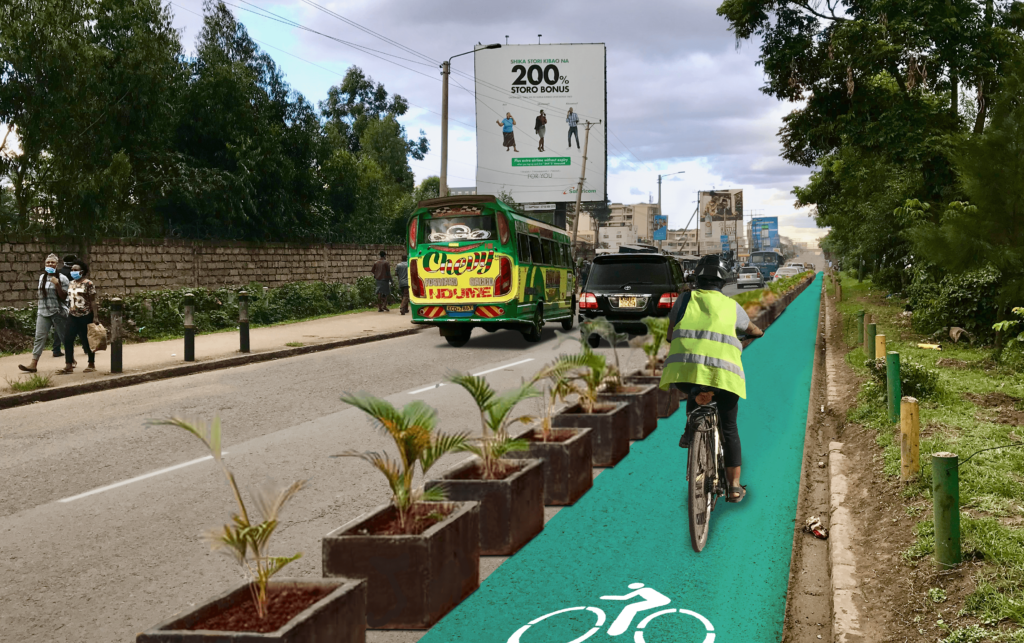
Projects
BRT CORRIDORS
COMMUTER RAIL CORRIDORS
Programmes
Kenya Urban Mobility and Growth Threshold Program
Public Transport Technical Assistance Project
Capacity Building for Bus Operation Policy and Management in NMA
Kenya Urban Mobility Improvement Project (KUMIP)
Promotion of Electric Mobility in Kenya Project
Transformative Urban Mobility Initiative (TUMI) Phase II
Nairobi Urban Mobility Improvement Project (NUMI)
Supporting Initiatives
Several complementary initiatives are underway to support the MRTS and address broader transportation challenges:
Transformative Urban Mobility Initiative (TUMI) E-Bus Mission
The TUMI E-Bus mission aims to establish a coalition of public and private sector organizations to achieve a transition to electric buses by supporting 20 Deep Dive Cities in their deployment of electric buses to have 100,000 electric buses by 2025. Nairobi is one of these cities. NaMATA's partnership with the TUMI E-Bus Mission aims to accelerate the city's transition to sustainable mobility. Phase I delivered an electric mobility roadmap, training, and research initiatives. Phase II, running until May 2026, will focus on integrating low-emission vehicle curricula, developing a harassment framework, and creating inclusive BRT design guidelines. TUMI partners are finalizing an implementation matrix for NaMATA's review and approval.
The Kenya Urban Mobility and Growth Threshold Program
A joint initiative by the Millennium Challenge Corporation (MCC) and the Government of Kenya, that aims to address limited connectivity in Kenya's urban areas, particularly Nairobi, to enhance economic growth. The programme will improve urban planning, prioritise land use and transportation investments, and increase accessibility through four projects: Integrated Transport Planning, First and Last Mile Connections, Detailed Land Use, and Blended Finance for BRT. The Integrated Transport Planning Project will strengthen NaMATA's capacity to develop and implement a unified transport plan for Nairobi, prioritising investments based on access, mobility, and connectivity.
Ngong Pilot Project (NPP)
NaMATA, in partnership with JICA, successfully implemented the Ngong Road Pilot Project (NPP) from 3rd April to 2nd May 2024. This focused initiative delivered targeted improvements along the busy Route 111 corridor between Nairobi and Ngong, achieving three key objectives: enhanced safety through professional driver and conductor training and traffic management systems, improved reliability via bus scheduling and fixed fares, and greater comfort through upgraded bus facilities, priority seating for Persons with Disabilities (PWDs), and reduced passenger congestion. The project included strategic infrastructure upgrades at major bus stops and terminals along the route, demonstrating NaMATA's commitment to developing a modern, efficient and inclusive public transport system within the Nairobi Metropolitan Area.
SUPPORTING INITIATIVES
Several complementary initiatives are underway to support the MRTS and address broader transportation challenges:
Transformative Urban Mobility Initiative (TUMI) E-Bus Mission
The TUMI E-Bus mission aims to establish a coalition of public and private sector organizations to achieve a transition to electric buses by supporting 20 Deep Dive Cities in their deployment of electric buses to have 100,000 electric buses by 2025. Nairobi is one of these cities. NaMATA’s partnership with the TUMI E-Bus Mission aims to accelerate the city's transition to sustainable mobility. Phase I delivered an electric mobility roadmap, training, and research initiatives. Phase II, running until May 2026, will focus on integrating low-emission vehicle curricula, developing a harassment framework, and creating inclusive BRT design guidelines. TUMI partners are finalizing an implementation matrix for NaMATA's review and approval.
The Kenya Urban Mobility and Growth Threshold Program
A joint initiative by the Millennium Challenge Corporation (MCC) and the Government of Kenya, that aims to address limited connectivity in Kenya’s urban areas, particularly Nairobi, to enhance economic growth. The programme will improve urban planning, prioritise land use and transportation investments, and increase accessibility through four projects: Integrated Transport Planning, First and Last Mile Connections, Detailed Land Use, and Blended Finance for BRT. The Integrated Transport Planning Project will strengthen NaMATA’s capacity to develop and implement a unified transport plan for Nairobi, prioritising investments based on access, mobility, and connectivity.
Ngong Pilot Project (NPP)
NaMATA, in partnership with JICA, successfully implemented the Ngong Road Pilot Project (NPP) from 3rd April to 2nd May 2024. This focused initiative delivered targeted improvements along the busy Route 111 corridor between Nairobi and Ngong, achieving three key objectives: enhanced safety through professional driver and conductor training and traffic management systems, improved reliability via bus scheduling and fixed fares, and greater comfort through upgraded bus facilities, priority seating for Persons with Disabilities (PWDs), and reduced passenger congestion. The project included strategic infrastructure upgrades at major bus stops and terminals along the route, demonstrating NaMATA's commitment to developing a modern, efficient and inclusive public transport system within the Nairobi Metropolitan Area
MRTS BACKGROUND
In 2018, the government launched the Regeneration Agenda for Nairobi to address traffic congestion and flooding.Aligned with Vision 2030 and this agenda, the government is implementing the MRTS, comprising BRT and Commuter Rail. This involves constructing new infrastructure along five designated BRT routes. The proposed MRTS network of BRT lines and Commuter Rail has been approved by the Ministry of Transport and Infrastructure. Further feasibility and design studies on various BRT lines have been supported by international institutions, including the World Bank, African Development Bank, European Union, and Korea Exim Bank.
Projects
Contacts
32nd Floor, Prism Towers, Upper Hill,
3rd Ngong Avenue,
P.O Box 30117-00100
Mon – Fri: 8:00 am – 5:00 pm

